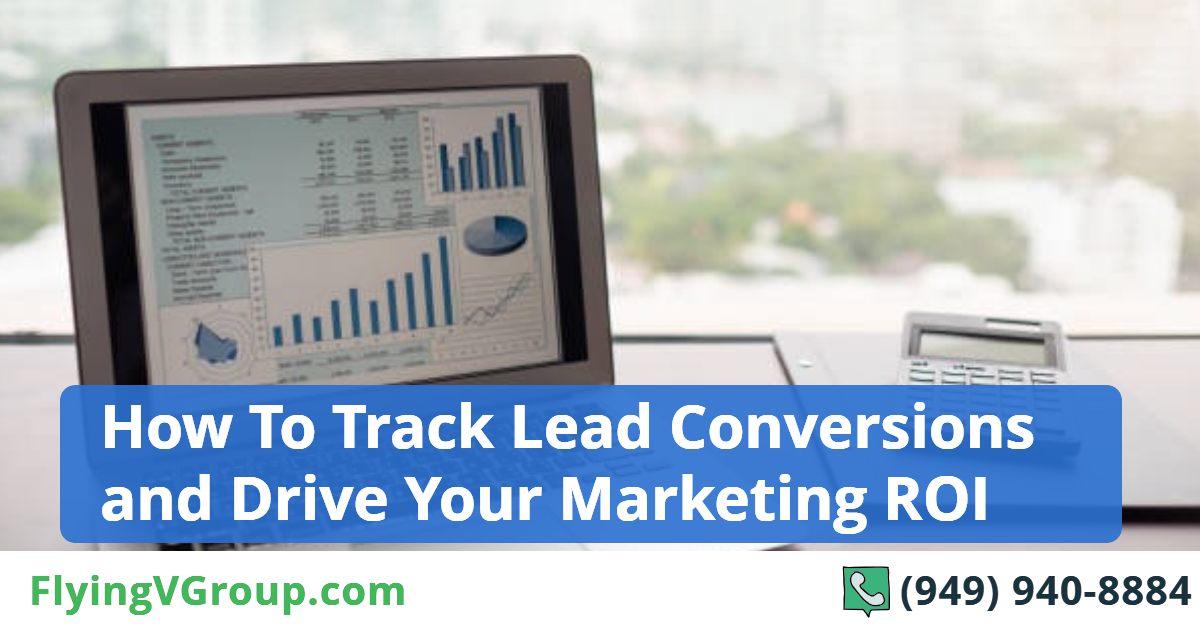How well can you identify the marketing channels that generate the most leads and drive more revenue and sales?
According to a HubSpot survey carried out in 2020, the top priority of marketers was generating and converting more leads in 2021.
(Source: Venture Harbour)
Lead conversion tracking is essential to any online business.
If you want to know whether your marketing efforts are working or not, you need to be able to see which channels are generating the best results.
Before we delve deeper, here’s a quick outline:
- What is lead conversion?
- What are sales leads?
- What is the lead conversion process?
- Lead conversion metrics
- Why is lead conversion important?
- How to optimize your lead conversion rate
- What is lead conversion tracking?
- Lead conversion tracking benefits
- How do you track lead conversions?
- Lead conversion tracking and ROI
- Why lead conversion tracking is important to understand your marketing ROI
- ROI of marketing automation
- How to measure ROI on content marketing
- Lead conversion tracking tools
- How much does lead conversion tracking cost?
We have a lot to cover so let’s get started!
- What is Lead Conversion?
- The Lead Conversion Funnel
- What Are Sales Leads?
- What is the Lead Conversion Process?
- Marketing ROI Metrics
- Why is Lead Conversion Important?
- How To Optimize Your Lead Conversion Rate
- What is Lead Conversion Tracking?
- Lead Conversion Tracking Benefits
- How Do You Track Lead Conversions?
- Lead Conversion Tracking and ROI
- Why Lead Conversion Tracking is Important to Understand Your Marketing ROI
- ROI of Marketing Automation
- How to Measure ROI on Content Marketing
- Lead Conversion Tracking Tools
- How Much Does Lead Conversion Tracking Cost?
- What Should You Do Next?
What is Lead Conversion?
Lead conversion is when someone takes action after being exposed to your content or seeing your advertisement. For example, they may click through to your website, download a free white paper, sign up for a webinar, request a demo, etc.
The lead conversion process involves converting leads into customers. Generally referred to as the Lead Conversion Cycle, it begins when someone finds your website, reads your content, and takes action. The lead conversion process continues until they become a paying customer.
But where do leads come from?
The Lead Conversion Funnel
Leads come from different sources. Some arrive directly from search engines like Google. Others come from referrals, such as friends or colleagues.
Some leads come from other websites. And some come from offline marketing channels like direct mail, print advertising, and radio.
(Source: Einstein Marketer)
Each type of lead has its path to becoming a customer.
What Are Sales Leads?
A sales lead is an individual who expresses interest in buying something. These individuals usually contact you via phone calls, emails, or text messages.
(Source: Wordstream)
You then need to qualify them so that you can move forward with a sale. Once you do, you close the deal.
The process of qualifying leads is known as nurturing:
- Visitors to leads
- Leads to marketing qualified leads (MQLs)
- MQLs to sales-qualified leads (SQLs)
- SQLs to customers
Nurturing is also referred to as lead generation. With lead generation, you can understand how to nurture leads and ultimately convert them.
What is the Lead Conversion Process?
How does lead conversion work?
Lead conversion begins after you have mastered how to nurture leads. The lead conversion process consists of the following steps:
Step 1: Identify the target audience.
Step 2: Create a list of prospects.
Step 3: Reach out to these prospects via phone calls, emails, and direct mailings.
Step 4: Follow up with the leads until they become qualified.
Step 5: Qualified leads are handed over to the Sales Team.
Step 6: Close the deal.
Marketing ROI Metrics
There are different types of marketing ROI metrics. Let’s look at four of the most important ones:
- Qualification rate
- Close rate
- Lead to sale conversion rate
- Lead conversion rate
Qualification Rate Metrics
The qualification rate measures the number of leads that are qualified.
It tells you how many people expressed interest in your products and services.
Close Rate Metrics
Close rate metrics measure the number of people who have taken action after being contacted by you.
They tell us how effective your sales team is at closing deals.
Lead to Sale Conversion Rate Metrics
Lead to sale conversion rate metrics are one of the most important marketing ROI metrics. It measures how effective your company is at converting leads into customers. Its mean focus is on the number of leads that turn into sales and increase revenue.
Lead Conversion Rate Metrics
Lead conversion rate is one of the most important metrics in B2B lead generation. The higher your sales lead conversion rate, the better. You want to be able to tell if your advertising efforts are producing results.
A lead conversion rate is the percentage of visitors who take action after visiting a website.
(Source: Ruler Analytics)
For example, if 10% of visitors click on an online advertisement, then the lead conversion rate is 10%. If 15% of visitors download a free report, then the lead conversion ratio is 15%.
The goal of lead generation is to convert as many prospects into customers as possible. The higher your sales lead conversion rate, the greater the likelihood that you’ll close a sale.
Why is Lead Conversion Important?
Lead conversion is critical to any marketing strategy. It tells you whether your advertising efforts are paying off, and it gives you an idea of which channels are most effective.
How To Optimize Your Lead Conversion Rate
You want to optimize your lead conversion rate by focusing on three areas:
- Your landing page
- Your offer
- Your follow-up strategy
Let’s look at each area separately.
Landing Pages
When someone visits your website, they’re usually there to find answers to specific questions. This could mean that they’re searching for a new job, researching a new business opportunity, or looking for a solution to a problem.
Regardless of whether they’re ready to make a purchase right away, they need to know where to go next.
To do that, they need to land on a page that tells them exactly what they’re looking for.
The first thing they see should answer their question quickly and clearly. It should also include a call to action—a button, link, or form that lets them move forward.
As soon as they click on that button, they enter the sales funnel.
Offer
Once someone clicks on your call to action, they’re taken to a page that explains your offer.
If they decide to proceed, they fill out forms that collect data about them.
Then, based on this information, you create a custom message tailored specifically to their needs.
Finally, you send a personalized email to introduce yourself, explain your offer, and ask them to opt in.
Follow-up
After sending the initial email, you wait. You don’t contact every prospect immediately. Instead, you focus on nurturing relationships.
That means keeping in touch regularly with prospects who are interested in your services.
In addition to emails, you can also reach out through phone calls, texts, and social media posts.
Here are some additional tips to help increase your sales lead conversion rate:
- Focus on providing value to your audience.
- Be consistent.
- Use social proof.
- Don’t overwhelm your audience.
- Ask for feedback.
- Create a sense of urgency.
- Keep track of your progress.
- Measure your success by keeping track of your lead conversions.
What is Lead Conversion Tracking?
Lead conversion tracking is the process of measuring the performance of online marketing activities such as email marketing, display advertising, social media marketing, SEO, PPC, and other types of digital marketing used to attract visitors to websites and convert them into leads and sales.
Lead Conversion Tracking Benefits
What do you stand to gain when you use lead conversion tracking in your digital marketing campaign?
- It gives an idea about the effectiveness of your ad campaigns. It also tells you which parts of your ad campaigns need improvement.
- It lets you compare the performance of different ad campaigns.
- You can see which ad campaigns are performing better than others.
- It allows you to identify the most effective landing pages, ad copy, and other elements in your ad campaigns.
- It makes it easier for you to plan future ad campaigns.
- It helps you optimize your ad campaigns by showing you where you could have done better.
- It lets you analyze the results of multiple ad campaigns at once.
- It gives you a snapshot view of your entire ad campaign.
- It provides you with a clear picture of the performance of each element in your ad campaigns.
How Do You Track Lead Conversions?
You can track lead conversions using several methods. These include:
- Content Marketing
- Email Marketing
- Social Media Marketing
- Display Advertising
- Search Engine Optimization
- Pay Per Click
- Video Marketing
- Affiliate Marketing
- Webinars
- Direct Mail
- And more!
Which method works best for me?
There’s no right answer here because every company has its own unique needs.
But there are some things you can consider before choosing a particular channel.
- Consider what type of content will help drive traffic to your website. For example, if you sell products, then product-related articles might work well. If you offer services, then service-based content might work better.
- Think about how long it takes to get from someone clicking on your ad to making a purchase. Some companies prefer to wait until they receive an email from their potential customer before following up. Other companies follow up immediately.
- What is the return on investment goal for your ad campaigns? You don’t want to spend money on an ad campaign without knowing whether it will produce positive results.
- If you’re not sure which method will be most effective for your business, you can test out different channels and find out which one performs best.
- Once you’ve chosen a method, you’ll need to determine how much time you’ll commit to this task. Will you dedicate just one hour per week? Or maybe two hours?
- Once you know how much time you’ll devote to lead conversion tracking, you can start planning your first ad campaign.
Lead Conversion Tracking and ROI
What does lead conversion tracking tell me about my marketing efforts?
Lead conversion tracking tells you whether your messages were effective in converting leads into sales. It will give you insights into where you need to spend more money.
And it also allows you to identify areas where you need to cut costs.
Why Lead Conversion Tracking is Important to Understand Your Marketing ROI
Lead conversion tracking is important because it gives you insight into whether your marketing efforts are working.
Without it, you don’t know if your ads are reaching your target market. You don’t know if your sales team knows how to convert leads into customers and you don’t understand which strategies are driving the highest levels of ROI.
What does ROI stand for in marketing?
ROI stands for Return On Investment. It measures the amount of money you spend compared to the amount of money you make. This is true regardless of where you buy your products.
Whether you sell online or offline.
Whether you sell physical goods or digital content.
Regardless of the industry that you operate in.
What matters is that you’re able to prove that your investment was worth it.
How do you do that?
By measuring the return on your investment.
ROI of Marketing Automation
Marketing automation software helps you automate processes so you can focus more on growing your business.
(Source: SlideShare)
Some examples include:
- Email marketing.
- Social media management.
- Customer support.
- Sales.
- Content creation.
- And more.
To help you grow your business, marketing automation software tracks data from all of your marketing channels. Then, it uses that data to generate reports. These reports give you insights into your performance so you can adjust your strategy accordingly.
(Source: Convince and Convert)
The goal of any good marketing automation platforms is to increase conversions.
If you want to improve your ROI of marketing automation, then you need to be able to measure conversions.
What does that mean?
It means you need to be able to find out which marketing tactics drive the highest level of conversions and which ones don’t. You’ll also understand how to convert leads into customers.
Because without this information, you won’t be able to optimize your campaign. You won’t be sure which tactics will bring you the biggest returns and you won’t know which ones aren’t effective at all.
How to Measure ROI on Content Marketing
Content marketing is a great way to build trust and authority in your brand. That’s why most marketers use content marketing to attract new customers.
But what if you could use content marketing ROI to get existing customers to refer others to your company?
That would be awesome!
It would be even better than getting new customers.
Why? Because referrals are much harder to acquire. And once acquired, they tend to stick around longer. This is especially true for B2B companies.
If you’re looking for ways to boost your sales, then content marketing may be just what you need. That’s how to measure ROI on content marketing.
Content marketing ROI works best when you focus on creating high-quality content. The more original and unique your content is, the more likely it will stand out and the more likely it will be shared.
This means more traffic to your website and more opportunities to interact with potential customers.
Lead Conversion Tracking Tools
There are several types of lead conversion tracking tools. But here are three of the most popular ones:
- LeadPages
- HubSpot
- Optimizely
Let’s go over their features.
1. LeadPages
With LeadPages, you create landing pages.
When someone lands on one of these pages, they fill out forms. Afterward, you can follow them around the web. You can even email them later. All this is done automatically. And you can track the results.
2. HubSpot
HubSpot offers two main products. One is called Inbound and the other is called Outbound.
Both allow you to build landing pages. They both have analytics built-in. Plus, they both have social media integration.
3. Optimizely
Optimizely is used by companies such as Airbnb, Dropbox, and Uber.
It allows you to test different elements of your site.
Here’s what it looks like.
In addition to testing, Optimizely has some cool features.
Like heat maps that show you which parts of your page get the most attention.
Or scroll maps that tell you which sections of your page users tend to read first.
Also, Optimizely lets you run experiments, which means you can see which changes work best.
Now, I know what you might be thinking.
How Much Does Lead Conversion Tracking Cost?
Well, it depends on what type of tool you choose.
LeadPages costs $29 per month.
HubSpot starts at $99 per month.
And Optimizely starts at $199 per month.
However, when you sign up for all three services, you only pay $79 per month. This way, you can try them out before committing to any long-term plans. And remember, you can always cancel anytime.
So, let’s say you decide to keep using the free version. You still save money because each service charges just $49 per month.
So, with LeadPages, you would spend $29 per month.
If you use HubSpot, you would spend $99 per month.
And if you use Optimizely, you would spend $199 per month.
What Should You Do Next?
Before you begin any campaign, you should set realistic expectations.
If you don’t know what kind of results you expect, you won’t be able to track them.
And without tracking, there’s no way to improve your performance.
At FlyingVGroup, we can help you leverage the power of digital marketing to generate leads for your business, convert them into sales, and drive more ROI. To learn more about lead conversion, contact us.
SHARE THIS POST
Thank you so much for reading How To Track Lead Conversions and Drive Your Marketing ROI . We really appreciate it! If you have any questions about our article, or can suggest any other topics you think we should explore, feel free to let us know.
Be sure to sign-up for our newsletter to receive monthly emails on all of the latest trends and happenings in the digital marketing space. You will also receive our FREE E-Book with the Amazing Marketing Tools for Powerful Business Growth. Sign-up below!
Also, if you received some value out of this article, please share with your friends or colleagues, or leave a comment/question below. We really appreciate you reading our blog and every share/comment means the world to us and allows us to continue producing valuable tools to help you grow your business!






0 Comments